A comprehensive survey research analysis on tooth reimplantation and insightful prognosis assessment
( Dr Mriganka SG, Dr Adhikansh Jaggi, Dr Naga Sai Lakshmi Pranavi Nittala, Dr Shubham Jain, Dr Rashid Ali, Dr Kowshik. V, Dr Goutham Kumar Arra, Dr Ruqaiyah Johar, Dr Nivedita Biswas, Dr Rahul Pandey, Dr Gaddamedhi Pranaya Goud, Dr Brijesh, Dr Tauseef Sheriff Mohammed, Dr Rupali Radhakishan Patwekar, Dr Asif Ali Mudgal, Dr Harinikhita Kamisetty.)
Abstract:
Tooth avulsion is caused by trauma to the dentition which requires appropriate and timely management to achieve the best outcome4. Tooth reimplantation is a treatment modality to replace an avulsed tooth into the tooth socket2. The prognosis for this therapy is varied and has a diverse possibility of outcomes that may either lead to the success or failure of the reimplanted tooth2. This article intends to establish the encounters of such cases in dental clinics and assess the prognosis range of tooth reimplantation.
Introduction:
Trauma to the dentition can sometimes cause tooth avulsion, which can be defined as the complete luxation of the tooth of the socket in the alveolar bone1. Most commonly this happens with children and more often in the anterior teeth2. Tooth reimplantation is a potent therapeutic option to reposition the tooth back in its original position1. It is recommended to store the tooth in Hank’s Balanced Salt Solution (HBSS), or isotonic saline or milk3. The tooth is placed back into the socket after administering local anaesthesia and is stabilized using a splint3.
With avulsed teeth, the sooner the tooth is repositioned back into the socket, the better the prognosis3. Almost all reimplanted teeth will ultimately require a root canal treatment to be done. The tooth is considered to have a poor prognosis if it has been out of the socket for more than 2 hours 3.
The tooth which has been reimplanted can have several outcomes, and it is difficult to judge the prognosis. The tooth can become ankylosed to the bone through functional healing2. A reimplanted tooth can also be resorbed and be replaced by the bone and undergo replacement resorption2. In both cases, the teeth are generally symptom-free, give a high-pitched sound when percussed and it has no mobility after complete healing2.
On the contrary, the tooth can have inflammatory resorption. Such teeth are tender when percussed, mobile and have increased inflammation which can be presented as pain, swelling or fistula in the oral cavity2.
AIM OF THE SURVEY RESEARCH:
The following survey was conducted with the aim of
- Identify the need for tooth reimplantation or be aware of the different scenarios in which the procedure is being performed.
- To figure out the different post-operative complications of the procedure.
- To observe the prevalence of IV fluid therapy given to patients of tooth reimplantation either preoperatively, postoperatively or while operating.
- To recognize the prognosis and the success of the procedure.
METHODOLOGY
An online questionnaire and face-to-face interview-based survey were conducted to understand the prognosis and methodology used for the tooth reimplantation procedure.
DATA COLLECTION PROCEDURE AND TOOLS
Before the start of the survey, the training and calibration of the 16 examiners were done to ensure uniformity and eliminate the examiner’s bias.
Survey interview
The assessment was done using a questionnaire consisting of open-ended questions like the gender of the dental practitioner, his/her demographic details, and his/her qualification; and one close-ended question– “Have you done tooth reimplantation in your clinical dental practice till today?”, after that the interview questions were asked which involve questions like “In what case did you perform the tooth reimplantation?”, “Are there any post complications with the tooth reimplantation? If yes, please mention it”, “Was IV fluid therapy given to the patient of tooth reimplantation preoperatively, postoperatively or while operating? If yes, please mention which IV fluid and why was the IV fluid given.”, and What was the prognosis of the tooth reimplantation that was done.
Results
A survey including 275 dentists from different parts of India was conducted to understand the requirements, complications, and success of the tooth reimplantation procedure. Among the participants, 86 were male and 188 were female dentists. Where 137 were BDS, 64 were MDS dentists, and 74 were MDS pursuing.

Among all the dentists 26% (71) had performed tooth reimplantation procedures, 70%(194) had never performed the procedure, and 4% (10) were not sure about the procedure they performed.
The first question was asked about the case in which the dentist performed the tooth reimplantation, which showed.
| Procedure | Response |
| Avulsion | 42 |
| Trauma | 14 |
| missing tooth | 10 |
| extraction | 5 |
| Total | 71 |
Table 1: Shows Re-implantation was done in case of avulsion by 42 dentists, in trauma by 14 dentists, missing tooth by 10 dentists, and in extraction by 5 dentists.
The second question was asked about the post-operative complications of the tooth Re-implantation procedure performed by the dentist.
| Complication | response |
| None | 40 |
| Ankylosis | 9 |
| Resorption | 4 |
| Tenderness on percussion | 5 |
| Necrosis | 2 |
| Mobility | 3 |
| Not sure | 8 |
| Total | 71 |
Table 2: Shows the complication that occurred in the reimplantation procedure, 9 have observed ankylosis, 4 have observed resorption, 5 have seen tenderness on percussion (TOP), necrosis by 2 and mobility of the tooth by 3, 8 were not sure or do not remember the complication.
The third question was asked about whether IV(intravenous) fluid was given to the patient or not, its type and reason for giving IV fluid.
| IV fluid type | Response |
| Normal Saline | 14 |
| DNS | 4 |
| Ringer’s lactate | 4 |
| Not given | 49 |
| Total | 71 |
Table 3: shows that the normal saline was used by 14, DNS(Dextrose and Sodium Chloride) was used by 4, ringer’s lactate was used by 4 and 49 dentists did not use any of the IV fluid.
The fourth question was asked about the prognosis of the tooth Re-implantation.
| Prognosis | response |
| Excellent | 4 |
| Good | 30 |
| Fair | 10 |
| Poor | 23 |
| Not sure | 4 |
| Total | 71 |
Table 4: shows that an Excellent prognosis was achieved by 4 dentists, a good prognosis was achieved by 30, fair by 10 poor by 23 and 4 were not sure about the prognosis.
Limitations:
The Limitations of this research are as follows:
· The sample size is very small( as only 275 dentists participated in this survey research).
· There is no sufficient medical literature present that states the rationale for the use of IV fluid therapy in general dental practice. No clear guidelines are there for IV fluid administration in day-to-day dental procedures and as such very few dentists in this survey research have reported the use of IV fluid therapy in patients of tooth reimplantation. In this survey research, the reason for dentists to give IV fluid therapy to patients of tooth reimplantation ( just after the tooth reimplantation procedure was over, the IV fluid therapy was given)postoperatively, was to remove weakness in patients( of tooth reimplantation).
Some disadvantages of tooth reimplantation are as follows:
- Risk of Ankylosis: Ankylosis, the fusion of the reimplanted tooth with the surrounding alveolar bone, is a common complication that may stabilize the tooth initially. However, it can lead to abnormal tooth resorption or infra occlusion, particularly in growing children. Müller et al. (2020) highlight this as a frequent long-term limitation in reimplanted teeth.
- Replacement Resorption: Reimplanted teeth often undergo replacement resorption, where the tooth structure is gradually replaced by bone over time. This complication typically results in the eventual loss of the tooth. As noted by Müller et al. (2020), this type of resorption is often asymptomatic but leads to tooth loss in the long term.
- Inflammatory Resorption: Inflammatory root resorption is another serious complication that compromises the success of reimplantation. This condition is characterized by swelling, pain, and tooth mobility, often leading to further tooth damage and eventual failure.
- Uncertain Long-term Prognosis: Despite early success, the long-term prognosis of reimplanted teeth remains uncertain. Continuous follow-up and potential secondary treatments are often required due to the unpredictable nature of biological healing.
Discussion
A total of 275 dentists were included in the survey and the forms were filled by the dentists based on their previous experience and the results of the procedure performed by them. The sixteen trained examiners guided the dentists through a face-to-face interview to ensure uniformity and eliminate examiner bias.
The survey was aimed to find out the requirements, complications, and success rate of the tooth reimplantation procedure. Tooth re-implantation is the process Of re-insertion of the tooth back in its socket avulsed or removed due to any reason, this procedure involves various storage conditions be it dry or with specific storage media, like Pasteurized milk, propolis, coconut water, egg white, and HBSS5, based on this storage condition reimplantation is characterised as immediate or delayed, among which delayed showed promising results despite being associated with several complications6.
This study result showed the majority of the tooth re-implantation procedures were performed on the avulsed tooth (59%) followed by trauma, extraction and missing tooth which is per the results shown in the study of Ideno H. Et. Al7.
An avulsion is the complete displacement of the tooth from the socket due to trauma. In the process of saving the permanent loss of the tooth, it is re-implanted in its original site8.
The process of reimplantation involves various steps starting from the storage of the avulsed tooth in the storage medium, placement of the tooth, RCT of the tooth and Splinting9.
This process is involved with various postoperative complications as this treatment modality is associated with a limited success rate, which depends on the time elapsed between the traumatic extraction and the reimplantation of the tooth10. In this study majority of the dentists did not observe any postoperative complications which shows the increased success rate of the reimplantation procedure seen in the study conducted by Breivik M et. al, followed by complications such as ankylosis, resorption, TOP, necrosis and mobility of the treated tooth11.
This study’s results showed that the majority of the dentists have not used IV fluid therapy and only 30% of dentists used IV fluid therapy postoperatively to remove weakness in patients of tooth reimplantation.
Talking about the prognosis of the tooth re-implantation procedure majority of the dentists have observed a good prognosis 30(42%), followed by poor 23(32.3%), fair 10(14%) and excellent 4(5.6%) which is less than the results obtained in the systematic review conducted by Wang L et. al, which may be due to the lack of knowledge on the type of protocol followed12.
Tooth reimplantation with newer techniques is a very useful technique to preserve the natural tooth in the oral cavity there may be the risk of ankylosis or resorption for which proper follow-ups should be taken.
Awareness should be spread among the general public regarding the benefits of tooth reimplantation and the urgency to rush the avulsed tooth for reimplantation procedures.
Conclusion
Tooth reimplantation is an essential treatment option used after the traumatic avulsion of teeth, with varying success rates that depend on several factors, including the time elapsed since the avulsion and the preservation medium in which the tooth is stored before reimplantation. A survey conducted among 275 dentists across India found that 26% of respondents had experience with performing reimplantation, primarily in cases related to tooth avulsion or trauma.
The study also revealed a range of post-operative complications, with ankylosis and resorption being the most frequently observed, although many dentists reported no significant complications. The intravenous fluids were given postoperatively, just after the procedure of tooth reimplantation was over, with normal saline being the most commonly used fluid when necessary.
Prognosis varied among reimplanted teeth: 30 respondents reported favourable( good) outcomes, while 23 observed poor results. These findings suggest that while tooth reimplantation remains a viable treatment, its success is highly dependent on swift intervention and appropriate clinical management. In many cases, additional treatments such as root canal therapy are required to ensure long-term tooth survival. Continuous advancements in treatment protocols and more standardized practices are needed to improve the overall success rates of tooth reimplantation procedures.
References
- Flores MT, Andersson L, Andreasen JO, Bakland LK, Malmgren B, Barnett F, Bourguignon C, DiAngelis A, HicksL, Sigurdsson A, Trope M, Tsukiboshi M, von Arx T. Guidelines for the management of traumatic dental injuries I. Fractures and luxations of permanent teeth, Dental Traumatology 2007;23:66-71©2007 The International Association For Dental Traumatology.
- Müller, D. D., et al. (2020). Survival and complication analyses of avulsed and replanted permanent teeth. Scientific Reports.
- Heath, P. J. (2022). How to replace and splint an avulsed tooth. MSD Manual Professional Edition.
- Gokhale, N., Kadam, K., Hugar, S., Joshi, R., & Kohli, N. N. (2022). Success rate of reimplantation of avulsed primary anterior teeth in children: A systematic review.Journal of the Scientific Society.
- Is Khinda V, Kaur G, S Brar G, Kallar S, Khurana H. Clinical and Practical Implications of Storage Media used for Tooth Avulsion. Int J Clin Pediatr Dent. 2017 Apr-Jun;10(2):158-165. doi: 10.5005/jp-journals-10005-1427. Epub 2017 Jun 1. PMID: 28890616; PMCID: PMC5571385.
- Guedes OA, Borges AH, Bandeca MC, de Araújo Estrela CR, de Alencar AG, Estrela C. Analysis of 261 avulsed permanent teeth of patients treated in a dental urgency service. J Dent Res Rev. 2015;2:25‐29.
- Ideno H, Komatsu K, Nakashima K, Nifuji A. Tooth transplantation and replantation: Biological insights towards therapeutic improvements. Genesis. 2022 Sep;60(8-9):e23496. doi: 10.1002/dvg.23496. Epub 2022 Aug 2. PMID: 35916605
- Rosenblatt, A. The best treatment for avulsed permanent teeth. Evid Based Dent 11, 42–43 (2010). https://doi.org/10.1038/sj.ebd.6400717
- Chowdhury SS, Howlader MR. Re-implantation of Accidentally Avulsed Tooth. BCPS Bhaban, 67 Shaheed Tajuddin Ahmed Sarani Mohakhali, Dhaka-1212, Bangladesh. 2013 Jan;31(1):39.
- Andreasen JO. Etiology and pathogenesis of traumatic dental injuries: a clinical study of 1298 cases. Scand J Dent Res.1970;78:329
- Breivik M, Kram E. Histomeric study of root resorption of human premolars following experimental reimplantation. European Journal of Oral Science. 1987;95:273-80
- Wang L, Jiang H, Bai Y, Luo Q, Wu H, Liu H. Clinical outcomes after intentional replantation of permanent teeth: A systematic review. Bosn J Basic Med Sci. 2020 Feb 5;20(1):13-20. doi: 10.17305/bjbms.2019.3937. PMID: 30684952; PMCID: PMC7029209.
- Guidelines for the management of traumatic dental injuries. II. Avulsion of Permanent teeth by Marie Therese Flores, Lars Andersson,Jens Ove Andreasen, Leif K. Bakland, Barbo Malmgrem, Frederick Barnett, Cecilia Bourguignon,Anthony DiAngelis, Lamar Hicks, Asgeir Sigurdsson, Martin Trope, MitsuhiroTsukiboshi, Thomas Von Arx published at Dental Traumatology, volume 23,Issue 3/p.130-136 (first published 16 May 2007).
- Darpan Bhargava.Intravenous Fluid Therapy in Maxillofacial Surgery,1st Ed.

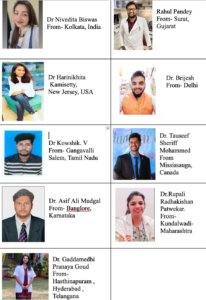

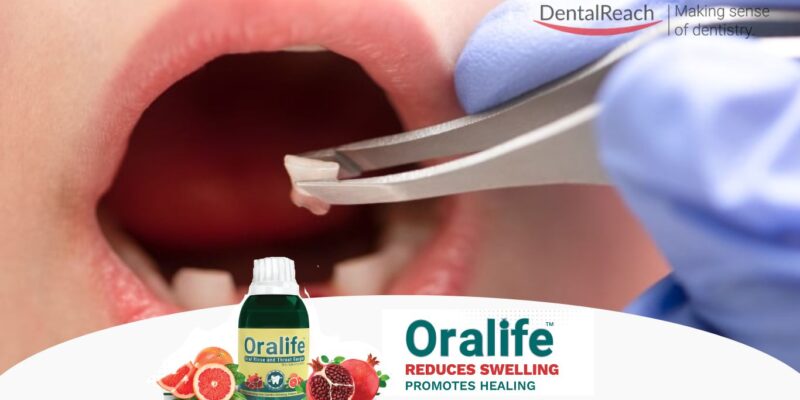




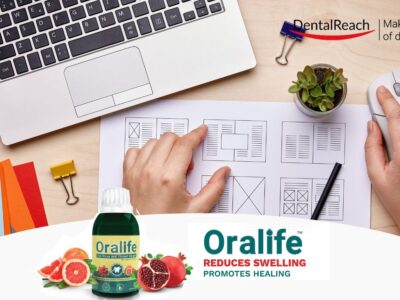

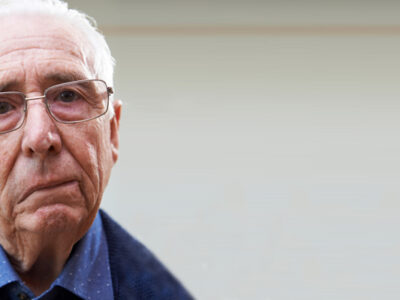


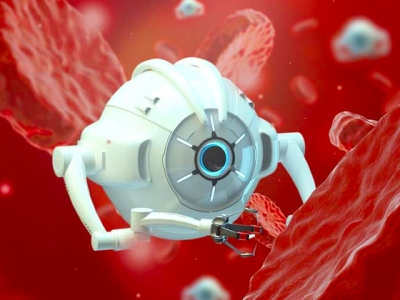









Comments